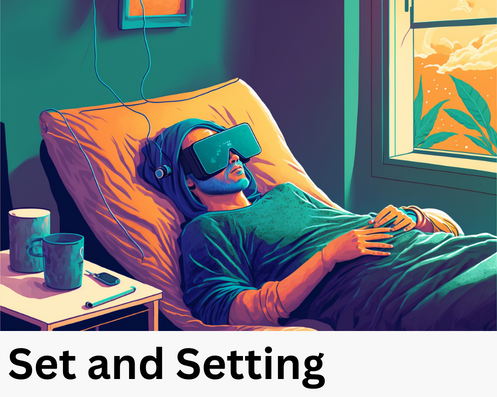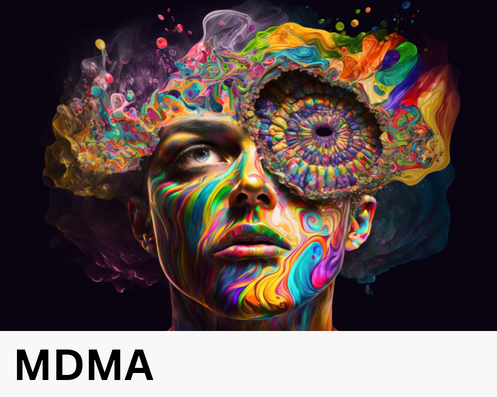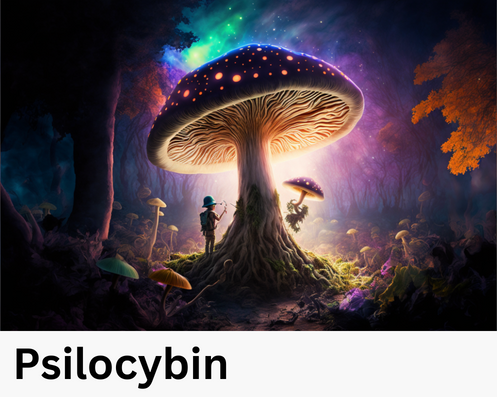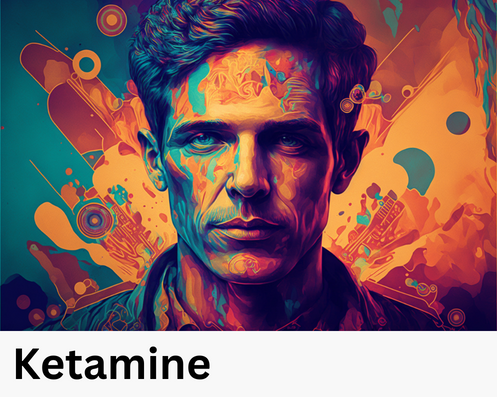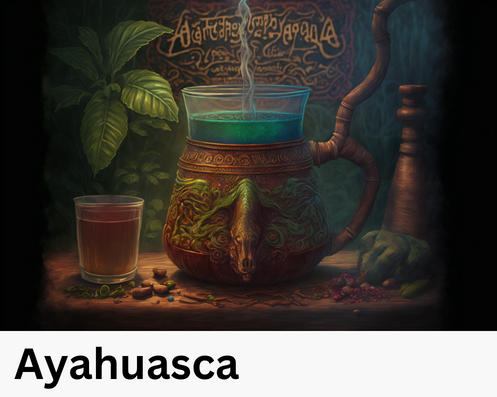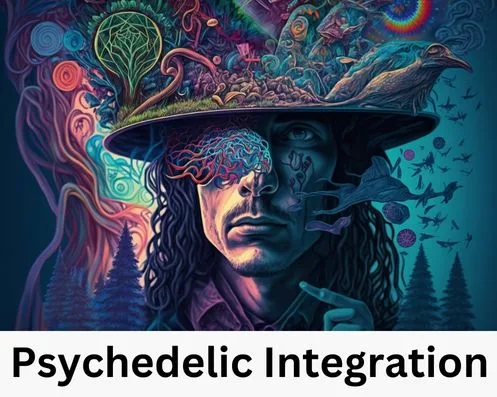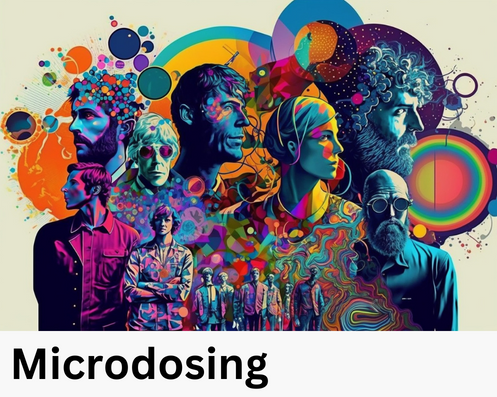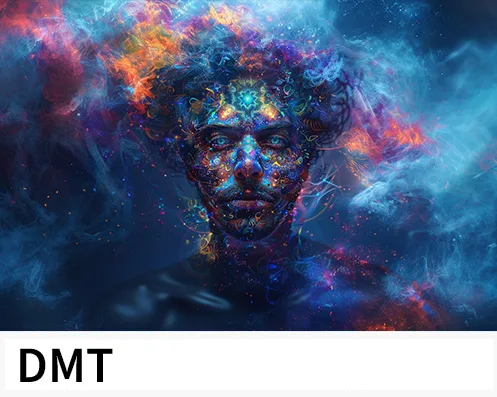
Overview
Ketamine is an old surgical anesthetic that has found new life and potential in the treatment of Depression, Suicidal Ideation, Anxiety, PTSD, and Pain Syndromes. Use for these mood disorders is currently considered “off label” and per the discretion of the prescribing doctor.
History
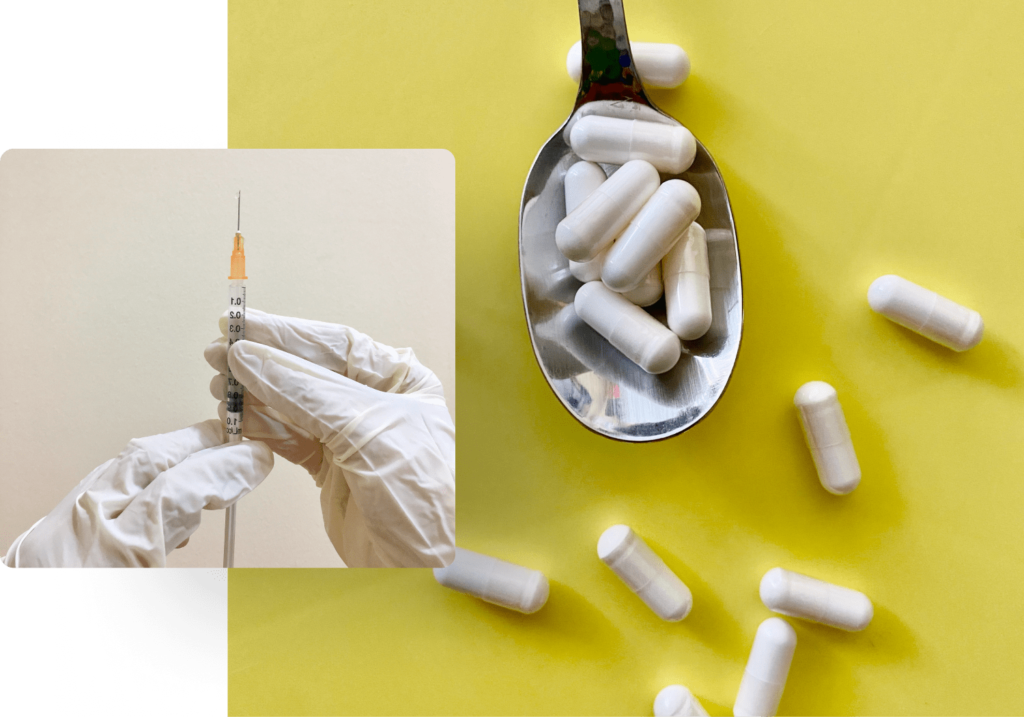
Ketamine is unique among anesthetic drugs. It was introduced into clinical practice greater than 30 years ago in hopes that it could function as a “monoanesthetic” intravenous drug to induce analgesia, amnesia, loss of consciousness, and immobility.1 However, it’s use for surgical and sedation purposes proved to be more limited, and has since been eclipsed by other medications.
First approved for medical use in 1970, it has the historical distinction of initially being used on soldiers in Vietnam for battlefield surgery. In the 1980s, Ketamine became increasingly known as a drug of abuse, available on the street in capsule, powder, tablet, solution, and injectable form.2 As a street drug, Ketamine is known as pecial K, K2, Vitamin K, Super K, Super C, Kit Kat, Purple, Mauve, Super Acid, and Special LA Coke. Users describe severe dissociation where they lose track of time and their surroundings in a “K-Hole”.
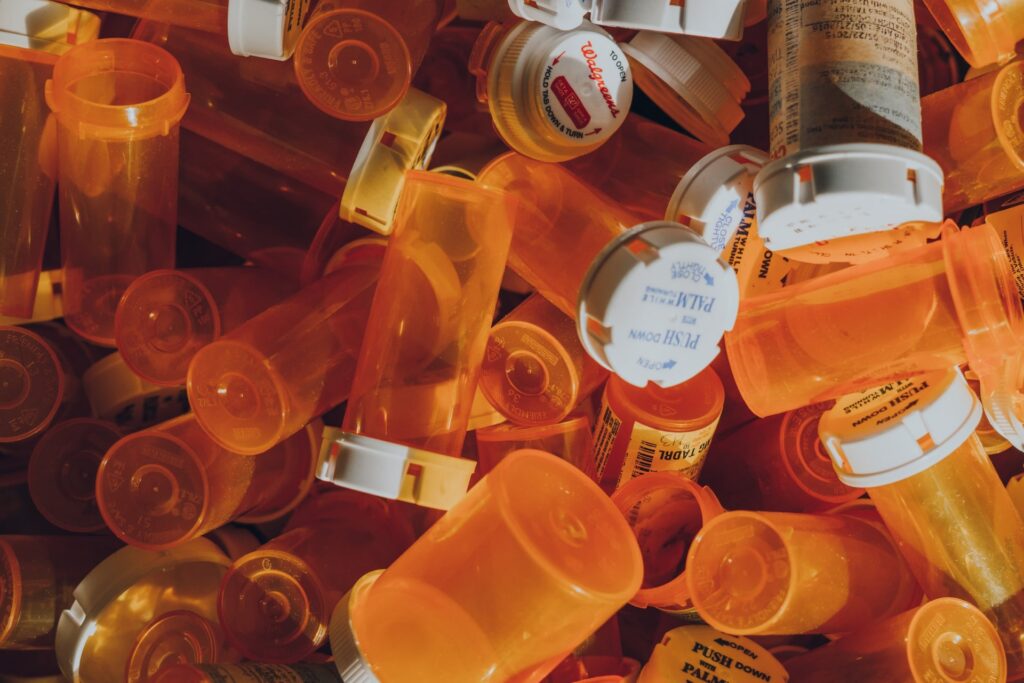
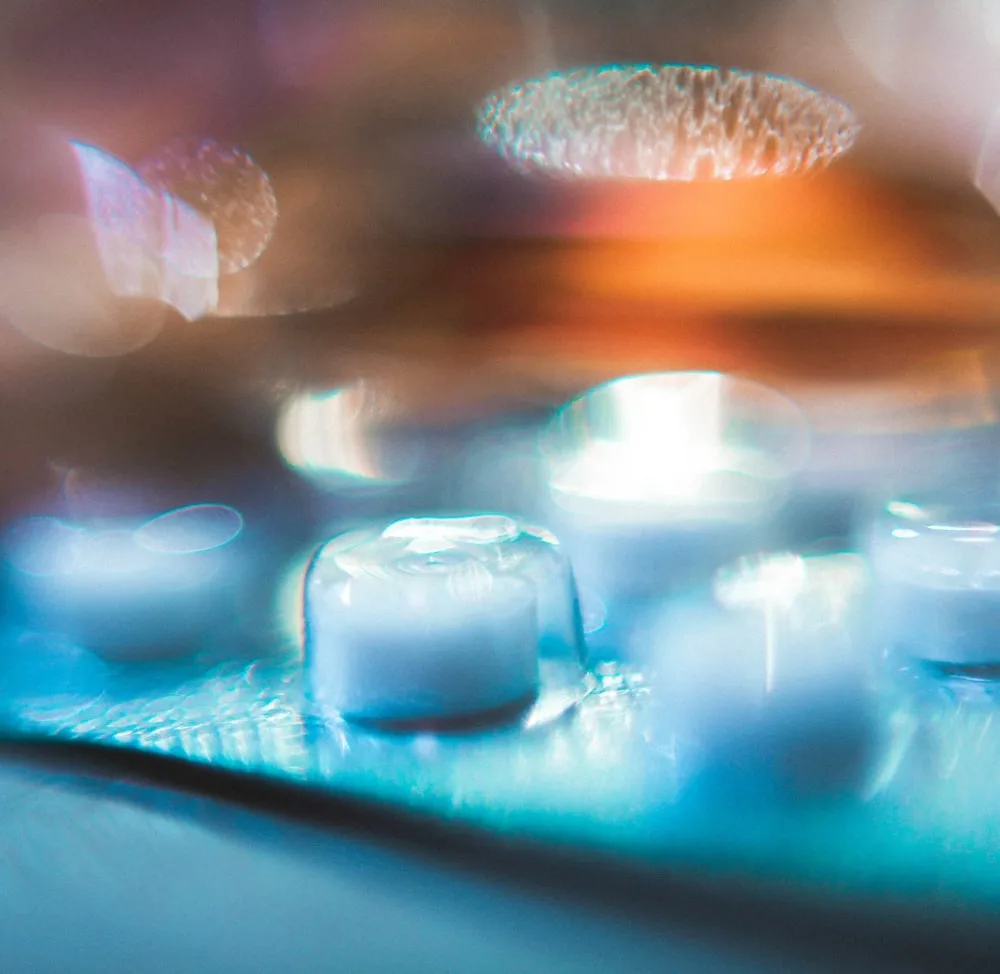
In 1999, the United States made ketamine a federally controlled substance in an attempt to stop its illicit use as a party drug. This led to a significant decline in interest for the drug. Later, clinical studies in the early to mid 2000s renewed investigation into Ketamine as a treatment for mood disorders.
Chemistry

Ketamine is a mixture of enantiomers, meaning two molecules that are mirror images of each other and thus not identical. The enantiomers are known as S-ketamine (also called esketamine) and R-ketamine, which have different effects on neurotransmitters in the brain. This difference in chemical formulations is important for patients to know, as studies indicate that S-Ketamine is vastly more clinically effective than either a mixture of S- and R-Ketamine, or R-Ketamine alone.3,4 Studies indicate that Ketamine exerts an effect on several brain receptors including:
- Opioid
- N-methyl-D-aspartate (NMDA) receptor
- Alpha-amino-3-hydroxy-5-methyl-4-isoxazole propionic acid (AMPA)
Ketamine increases the activity of Opioid receptors, which likely explains its ability to reduce acute pain.5 Ketamine down-regulates the excitatory actions of the NMDA receptor, though it is not clear if there is a connection between this chemical response and treatment of Depression. Studies have established that S-Ketamine is more potent for binding to NMDA receptors compared to a mixture of both S- and R-Ketamine.6 Ketamine is believed to use glutamate to bind to AMPA receptors to bring about antidepressant effects.7
Dosage and
Effects

At the right dose and with appropriate medical supervision, Ketamine can bring resolution to a suffering mind through beneficial effects including:
- A sense of calm
- Relaxation
- Pleasant neutrality when faced with sources of conflict
- Relief from troubling thought patterns
- Greater perspective and clarity on life
Medical administration of Ketamine can be given in oral, nasal, intravenous, subcutaneous, sublingual, and intramuscular form. Presently, most Ketamine for mood disorders is prescribed by Physician Psychiatrists, though Anesthesiology prescribers are also common, with Emergency Medicine and Family Medicine Doctors also starting to participate in this treatment.
Fifty percent of Ketamine patients studied reported a rapid and robust response to mood symptoms after a single infusion of Ketamine, within 40 – 120 minutes.7,8,9 Although many studies have utilized 0.25 mg/kg – 0.5 mg/kg as a guideline for intramuscular and intravenous dosing, an optimal therapeutic dose of Ketamine for mental health disorders has not been established.10

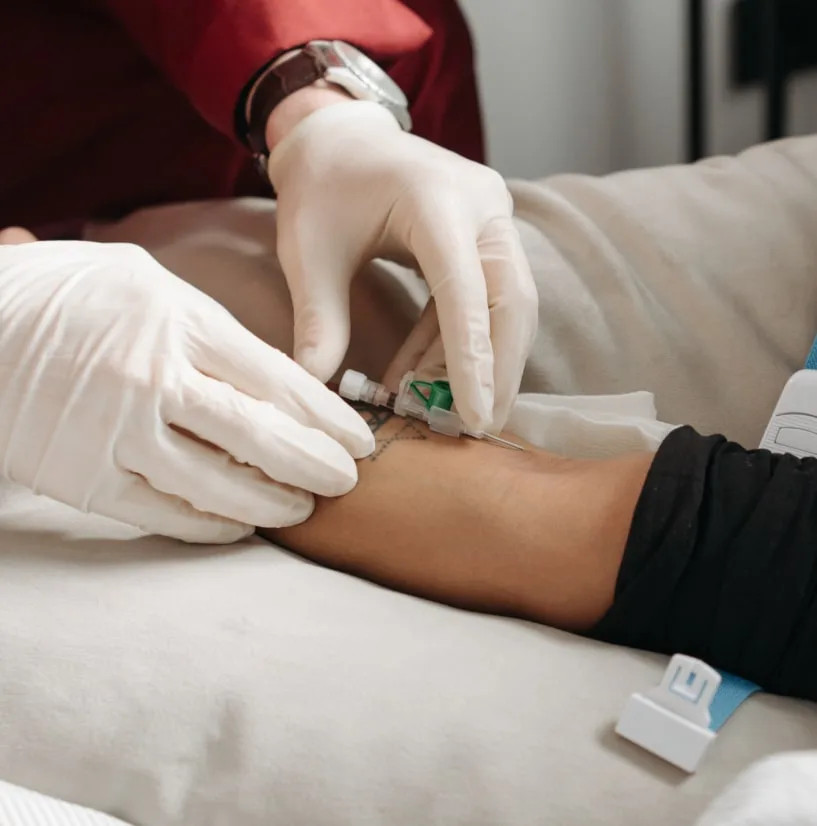
For patients refractory to the above dosing, an increase to 1.0 mg/kg can be considered.11 Ketamine is typically administered as a series of treatments, and increased frequency may be beneficial to some patients. One study showed that patients reported better improvements in depression when they were treated with IV Ketamine three times per week as compared to two times per week.12 However, a differing study showed that IV Ketamine dosing twice weekly for up to six weeks wan comparable to a three times weekly regemin.13
In current clinical practice, oral (pill form) Ketamine is also used. Only 20%-25% of orally administered ketamine reaches systemic circulation, therefore oral doses of 2.0-2.5 mg/kg may be needed to reach the therapeutic equivalence of IV Ketamine.14
Therapeutic doses of intranasal Ketamine (brand name Spravato) have been studied at 50mg.15
Multiple studies have demonstrated that Ketamine is safe to use in concert with daily prescribed antidepressants.16,17
Some patients are genetically resistant to traditional antidepressants such as Selective Serotonin Reuptake Inhibitors (SSRIs), and for these patients, treatment of Depression with Ketamine seems particularly promising.18
Health &
Research
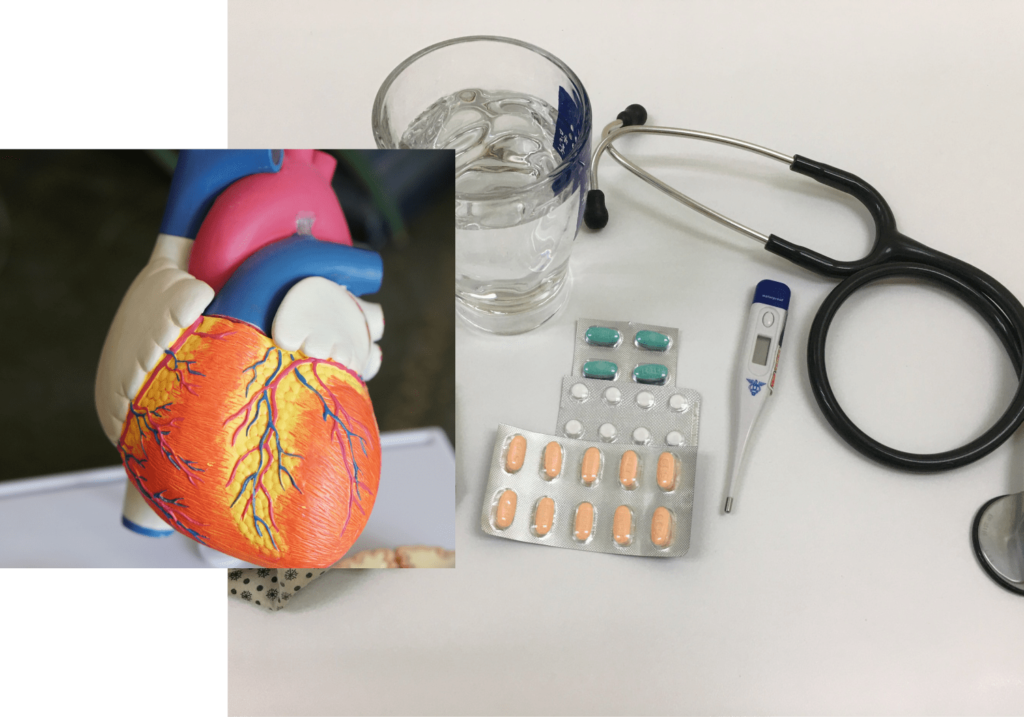
Ketamine has been shown to bring about improvements in multiple advserse psychological states including:
- Depression
- Unipolar Depression
- Resistant Depression
- PTSD
- Anxiety
- Social Anxiety
- Suicidal Ideations
- Complex Regional Pain Syndrome
Most of the body of reasearch on Ketamine for treating mood disorders is limited to the past 20 years. This is a relatively short timeframe for medicine, however, due to emerging research and interest in this treatment, that there was an approxamate six-fold increase in physicians providing Ketamine for psychiatric disorders from 2011 to 2016.19
Benefits & Risks

Benefits of Ketamine for Depression and PTSD include typically limited or short-term treatment of 6 weeks or less, that can bring about rapid improvement in mood with long-lasting effects. Ketamine can only be prescribed by a physician, and it is generally safe when used in an appropriately supervised medical setting.
It should be emphasized that Ketamine use outside of a medically supervised setting is not recommended, as dangerously high doses can lead to:
- dissociation
- loss of contact with reality
- high blood pressure
- fast heart rate
- vomiting
- seizures
- coma


Another study demonstrated that even medically supervised Ketamine at appropriate doses brought about side effects when compared to placebo. This is something for patients to be aware of as they are considering treatment. Randomized trials compared intranasal esketamine + antidepressant with placebo + antidepressant in 568 patients with treatment-resistant depression. The frequency of adverse effects with adjunctive esketamine versus placebo was:20
- Anxiety – 13 versus 6 percent of patients
- Increased blood pressure – 10 versus 3 percent
- Dissociation – 41 versus 9 percent
- Dizziness – 29 versus 8 percent
- Hypoesthesia – 18 versus 2 percent
- Lethargy (fatigue) – 11 versus 5 percent
- Nausea – 28 versus 9 percent
- Vomiting – 9 versus 2 percent
- Sedation (somnolence) – 23 versus 9 percent
- Vertigo – 23 versus 3 percent
- Feeling drunk – 5 versus 1 percent
Therapeutic
Uses

Ketamine shows benefit for a variety of therapeutic uses. Ketamine has been shown to rapidly alleviate treatment-resistant unipolar major depression, as well as suicidal ideation.21 Real time MRI images of the brain indicate that Ketamine is able to activate areas of the brain responsible for motional expression, attention allocation, and mood regulation, which likely plays a role in addressing Depression.22
Anyone experiencing thoughts of suicide or self-harm should seek immediate medical care. Ketamine is being investigated as a possible crisis intervention drug, as it can mitigate suicidal ideations with the effects lastign up to one week after a single infusion.23,24

“I was able to heal wounds from my traumatic childhood, heal the heavy weight of a death of a family member, and learn to not fear death. These are not things I was able to do before or on my own. Despite all of my logical, well rounded thoughts, I was unable to fully control the feelings that remained very deep in my subconscious. It didn’t matter how much my cognitive brain understood them, Ketamine helped the ideas take root at the deepest level and stick. It brought me to my own unique, deeper sense of spirituality. I was able to relax mentally during and after treatment in ways I never had before, ways I’d never even imagined.”
One Ketamine user describes their experience
Additional small studies have shown oral Ketamine to be effective in treating Anxiety and Social Anxiety.26
Ketamine is also emerging as a treatment of promise for PTSD. A single Ketamine infusion was shown to bring about rapid improvement in PTSD symptom severity.25
Lastly, Ketamine has shown efficacy for Complex Regional Pain Syndrome, a disorder that can be accompanied by severe pain that is often both chronic and resistant to conventional therapy. A small cohort of 12 subjects received only two ketamine infusions, but the results were nonetheless impressive. Of the group, 58% experienced relief of their symptoms for ≥1 year, while almost 33% remained pain free for >3 years.27
Media & Books

Online:
https://www.yalemedicine.org/news/ketamine-depression
https://www.health.harvard.edu/blog/ketamine-for-major-depression-new-tool-new-questions-2019052216673
https://www.yalemedicine.org/news/ketamine-depression
Books:
The Ketamine Papers: Science, Therapy, and Transformation by Phil Wolfson M.D. and Glenn Hartelius Ph.D.
Ketamine for Depression by Dr. Stephen J. Hyde
Ketamine Infusions: A Patients Guide 2nd Edition: Everything You Need To Know Before Going For Ketamine Infusions by Berkley Jones
Ketamine: Dreams and Realities by Karl Jansen
Legal Status

The good news about Ketamine is that in the US, as a patient, it is 100% legal for you to receive Ketamine treatment from a certified doctor. Since the 1970s, Ketamine has been legally marketed in the United States as an injectable, short-acting anesthetic for use in humans and animals. In 1999, Ketamine and its associated psychoactive derivatives became a Schedule III non-narcotic substance under the Controlled Substances Act. Schedule III drugs, which include codeine and anabolic steroids, have less potential for abuse than Schedule I (heroin) or Schedule II (cocaine) drugs. However, abuse of Schedule III substances may lead to physical or psychological dependence on the drug. Just as possession of non-prescribed medications like benzodiazepines and opiates remains illegal, illicit possession of Ketamine without a prescription remains illegal in the United States. As we have stressed, Ketamine is not safe to use outside of medical supervision. Fortunately, as long as you are using Ketamine under medical guidance from a doctor’s prescription, there is no legal or criminal risk.
Globally, use of Ketamine is being evaluated. China is troubled by illicit production of Ketamine for the black market. China has therefore moved to tighter control on Ketamine to classify it in the highest risk Schedule 1 Category.28 The United Kingdom is also grappling with Ketamine for the indication of Depression, and how it should be offered in their single payer National Health Services Program.29 More is sure to come from this old medication with promising new mental health applications.
April 2023 UPDATE
In recent years, there has been a surge of interest in the use of ketamine as a treatment for depression and other mental health conditions. Research has shown that low doses of ketamine can have rapid and long-lasting antidepressant effects, with many clinics now offering ketamine infusions as a treatment option. However, as with any medication, there are potential risks and side effects associated with ketamine use.
With the escalation in rates of addiction to ketamine, we felt it was necessary to provide an update on current research.
Ketamine is a dissociative anesthetic that can cause hallucinations and a feeling of detachment from reality. Some people may find these effects appealing and seek out ketamine for recreational use, which can lead to addiction and other health problems. The body does develop a tolerance, so with time, the person will have to take more and more of ketamine to get the same hallucinogenic effect. This cycle propagates the “party-drug” stigma.1,2
While ketamine is widely effective in treating depression and other mental health conditions, some people may experience anxiety, agitation, or severe restlessness after taking the drug.
This is why set and setting are so important, which can help someone avoid panic attacks and from having an overall negative experience. Depending on where you are in your healing journey, in the beginning, it’s a wise decision to have a trained therapist as a guide.
Some companies mail ketamine to your home, where you can experience the drug alone. This may not always be the best option. For example, if you suffer from severe trauma, PTSD, or panic disorder, having a guide can not only ground you if needed, but help you gain the most therapeutic benefit by talking through and help you reframe memories.
With the emergence of mail-order ketamine, the incidence of overdose has unfortunately increased. Be sure to only take the recommended dose and have someone with you at home to supervise.
One of the longer-term side effects of ketamine overdose that has recently surfaced is bladder injury (ketamine-induced uropathy, KIU).3 Taking too much of ketamine for a long period of time (dose-dependent toxicity) can cause inflammation and damage to the bladder, which can lead to a range of symptoms including pain, frequent urination, and difficulty emptying the bladder.
In some cases, the damage to the bladder can be severe enough to require permanent catheter placement. This means that the person is no longer able to urinate on their own.
Studies performed on patients taking safe doses of ketamine showed no incidence of developing bladder dysfunction.4
Other potential side effects of ketamine overdose and abuse may include permanent cognitive impairment, hallucinations, and memory loss. These effects may persist even after the drug has left the system and can have a significant impact on a person’s quality of life.5
It’s important to note that the risk of overdose and other negative side effects increases with higher doses of ketamine, as well as with long-term use. Avoid the temptation to combine ketamine with other substances like alcohol. This can cause you to stop breathing, among many other dangerous side effects.2
Studies show that the body doesn’t develop a physiologic addiction to ketamine, but a psychological addiction can create an emotionally difficult withdrawal period – something similar to coming down off of cocaine.2
While all of this may sound scary, don’t let it deter you from trying ketamine if your healthcare provider recommends it. As with any drug, there is always a safe dose, and unfortunate side effects with overdose.
Sources:
- Orhurhu VJ, Vashisht R, Claus LE, Cohen SP. Ketamine Toxicity. In: StatPearls. StatPearls Publishing, Treasure Island (FL); 2022. PMID: 31082131.
- https://americanaddictioncenters.org/withdrawal-timelines-treatments/ketamine
- Castellani D, Pirola GM, Gubbiotti M, Rubilotta E, Gudaru K, Gregori A, Dellabella M. What urologists need to know about ketamine-induced uropathy: A systematic review. Neurourol Urodyn. 2020 Apr;39(4):1049-1062. doi: 10.1002/nau.24341. Epub 2020 Mar 25. PMID: 32212278.
- Liriano F, Hatten C, Schwartz TL. Ketamine as treatment for post-traumatic stress disorder: a review. Drugs Context. 2019 Apr 8;8:212305. doi: 10.7573/dic.212305. PMID: 31007698; PMCID: PMC6457782.
- https://americanaddictioncenters.org/ketamine-abuse/ketamine-side-effects
References
- Kohrs, R., & Durieux, M. E. (1998). Ketamine: teaching an old drug new tricks. Anesthesia and analgesia, 87(5), 1186–1193. https://doi.org/10.1097/00000539-199811000-00039
- https://www.delraycenter.com/a-brief-history-of-ketamine/
- Andrade C. (2017). Ketamine for Depression, 3: Does Chirality Matter?. The Journal of clinical psychiatry, 78(6), e674–e677. https://doi.org/10.4088/JCP.17f11681
- M Nishimura, K Sato. (1999). Ketamine stereoselectively inhibits rat dopamine transporter. Neuroscience Letters. 274 (2),131-134. https://doi.org/10.1016/S0304-3940(99)00688-6.
- Malhi, G. S., Byrow, Y., Cassidy, F., Cipriani, A., Demyttenaere, K., Frye, M. A., Gitlin, M., Kennedy, S. H., Ketter, T. A., Lam, R. W., McShane, R., Mitchell, A. J., Ostacher, M. J., Rizvi, S. J., Thase, M. E., & Tohen, M. (2016). Ketamine: stimulating antidepressant treatment?. BJPsych open, 2(3), e5–e9. https://doi.org/10.1192/bjpo.bp.116.002923
- Su, T. P., Chen, M. H., Li, C. T., Lin, W. C., Hong, C. J., Gueorguieva, R., Tu, P. C., Bai, Y. M., Cheng, C. M., & Krystal, J. H. (2017). Dose-Related Effects of Adjunctive Ketamine in Taiwanese Patients with Treatment-Resistant Depression. Neuropsychopharmacology : official publication of the American College of Neuropsychopharmacology, 42(13), 2482–2492. https://doi.org/10.1038/npp.2017.94
- Zanos, P., Moaddel, R., Morris, P. J., Georgiou, P., Fischell, J., Elmer, G. I., Alkondon, M., Yuan, P., Pribut, H. J., Singh, N. S., Dossou, K. S., Fang, Y., Huang, X. P., Mayo, C. L., Wainer, I. W., Albuquerque, E. X., Thompson, S. M., Thomas, C. J., Zarate, C. A., Jr, & Gould, T. D. (2016). NMDAR inhibition-independent antidepressant actions of ketamine metabolites. Nature, 533(7604), 481–486. https://doi.org/10.1038/nature17998
- Fond, G., Loundou, A., Rabu, C., Macgregor, A., Lançon, C., Brittner, M., Micoulaud-Franchi, J. A., Richieri, R., Courtet, P., Abbar, M., Roger, M., Leboyer, M., & Boyer, L. (2014). Ketamine administration in depressive disorders: a systematic review and meta-analysis. Psychopharmacology, 231(18), 3663–3676. https://doi.org/10.1007/s00213-014-3664-5
- McGirr, A., Berlim, M. T., Bond, D. J., Fleck, M. P., Yatham, L. N., & Lam, R. W. (2015). A systematic review and meta-analysis of randomized, double-blind, placebo-controlled trials of ketamine in the rapid treatment of major depressive episodes. Psychological medicine, 45(4), 693–704. https://doi.org/10.1017/S0033291714001603 McCloud, T. L., Caddy, C., Jochim, J., Rendell
- Loo C. (2018). Can we confidently use ketamine as a clinical treatment for depression?. The Lancet. Psychiatry, 5(1), 11–12. https://doi.org/10.1016/S2215-0366(17)30480-7
- 11.Andrade C. (2017). Ketamine for Depression, 4: In What Dose, at What Rate, by What Route, for How Long, and at What Frequency?. The Journal of clinical psychiatry, 78(7), e852–e857. https://doi.org/10.4088/JCP.17f11738
- Singh, J. B., Fedgchin, M., Daly, E. J., De Boer, P., Cooper, K., Lim, P., Pinter, C., Murrough, J. W., Sanacora, G., Shelton, R. C., Kurian, B., Winokur, A., Fava, M., Manji, H., Drevets, W. C., & Van Nueten, L. (2016). A Double-Blind, Randomized, Placebo-Controlled, Dose-Frequency Study of Intravenous Ketamine in Patients With Treatment-Resistant Depression. The American journal of psychiatry, 173(8), 816–826. https://doi.org/10.1176/appi.ajp.2016.16010037
- Singh, J. B., Fedgchin, M., Daly, E. J., De Boer, P., Cooper, K., Lim, P., Pinter, C., Murrough, J. W., Sanacora, G., Shelton, R. C., Kurian, B., Winokur, A., Fava, M., Manji, H., Drevets, W. C., & Van Nueten, L. (2016). A Double-Blind, Randomized, Placebo-Controlled, Dose-Frequency Study of Intravenous Ketamine in Patients With Treatment-Resistant Depression. The American journal of psychiatry, 173(8), 816–826. https://doi.org/10.1176/appi.ajp.2016.16010037
- 14.Andrade C. (2019) Oral ketamine for depression, 2: practical considerations. J Clin Psychiatry. 80(2):19 f12838. https://doi.org/10.4088/JCP.19f12838
- 15.Lapidus, K. A., Levitch, C. F., Perez, A. M., Brallier, J. W., Parides, M. K., Soleimani, L., Feder, A., Iosifescu, D. V., Charney, D. S., & Murrough, J. W. (2014). A randomized controlled trial of intranasal ketamine in major depressive disorder. Biological psychiatry, 76(12), 970–976. https://doi.org/10.1016/j.biopsych.2014.03.026
- Kishimoto, T., Chawla, J. M., Hagi, K., Zarate, C. A., Kane, J. M., Bauer, M., & Correll, C. U. (2016). Single-dose infusion ketamine and non-ketamine N-methyl-d-aspartate receptor antagonists for unipolar and bipolar depression: a meta-analysis of efficacy, safety and time trajectories. Psychological medicine, 46(7), 1459–1472. https://doi.org/10.1017/S0033291716000064
- Wilkinson, S. T., Ballard, E. D., Bloch, M. H., Mathew, S. J., Murrough, J. W., Feder, A., Sos, P., Wang, G., Zarate, C. A., Jr, & Sanacora, G. (2018). The Effect of a Single Dose of Intravenous Ketamine on Suicidal Ideation: A Systematic Review and Individual Participant Data Meta-Analysis. The American journal of psychiatry, 175(2), 150–158. https://doi.org/10.1176/appi.ajp.2017.17040472
- Emma R. Veldman, Dejan Mamula, Haitang Jiang, Mikael Tiger, Carl-Johan Ekman, Johan Lundberg, Per Svenningsson. (2021) P11 (S100A10) as a potential predictor of ketamine response in patients with SSRI-resistant depression. Journal of Affective Disorders. 290(1), 240-244. https://doi.org/10.1016/j.jad.2021.04.055
- Wilkinson, S. T., Toprak, M., Turner, M. S., Levine, S. P., Katz, R. B., & Sanacora, G. (2017). A Survey of the Clinical, Off-Label Use of Ketamine as a Treatment for Psychiatric Disorders. The American journal of psychiatry, 174(7), 695–696. https://doi.org/10.1176/appi.ajp.2017.17020239
- https://www.accessdata.fda.gov/drugsatfda_docs/label/2019/211243lbl.pdf
- Newport, D. J., Carpenter, L. L., McDonald, W. M., Potash, J. B., Tohen, M., Nemeroff, C. B., & APA Council of Research Task Force on Novel Biomarkers and Treatments (2015). Ketamine and Other NMDA Antagonists: Early Clinical Trials and Possible Mechanisms in Depression. The American journal of psychiatry, 172(10), 950–966. https://doi.org/10.1176/appi.ajp.2015.15040465
- Chen, M. H., Li, C. T., Lin, W. C., Hong, C. J., Tu, P. C., Bai, Y. M., Cheng, C. M., & Su, T. P. (2018). Persistent antidepressant effect of low-dose ketamine and activation in the supplementary motor area and anterior cingulate cortex in treatment-resistant depression: A randomized control study. Journal of affective disorders, 225, 709–714.
- Ballard, E. D., Yarrington, J. S., Farmer, C. A., Richards, E., Machado-Vieira, R., Kadriu, B., Niciu, M. J., Yuan, P., Park, L., & Zarate, C. A., Jr (2018). Characterizing the course of suicidal ideation response to ketamine. Journal of affective disorders, 241, 86–93. https://doi.org/10.1016/j.jad.2018.07.077
- Andrade C. (2018). Ketamine for Depression, 6: Effects on Suicidal Ideation and Possible Use as Crisis Intervention in Patients at Suicide Risk. The Journal of clinical psychiatry, 79(2), 18f12242. https://doi.org/10.4088/JCP.18f12242
- Feder A, Parides MK, Murrough JW, et al. (2014). Efficacy of Intravenous Ketamine for Treatment of Chronic Posttraumatic Stress Disorder: A Randomized Clinical Trial. JAMA Psychiatry. 71(6), 681–688. doi:10.1001/jamapsychiatry.2014.62
- Glue, P., Neehoff, S. M., Medlicott, N. J., Gray, A., Kibby, G., & McNaughton, N. (2018). Safety and efficacy of maintenance ketamine treatment in patients with treatment-refractory generalised anxiety and social anxiety disorders. Journal of Psychopharmacology, 32(6), 663–667. https://doi.org/10.1177/0269881118762073
- Graeme E. Correll, BE, MBBS, FANZCA, Jahangir Maleki, MD, PhD, Edward J. Gracely, PhD, Jesse J. Muir, MD, Ronald E. Harbut, MD, PhD. (2004). Subanesthetic Ketamine Infusion Therapy: A Retrospective Analysis of a Novel Therapeutic Approach to Complex Regional Pain Syndrome. Pain Medicine, 5 (3), 263–275, https://doi.org/10.1111/j.1526-4637.2004.04043.x
- https://www.unodc.org/documents/commissions/CND/CND_Sessions/CND_58/ECN72015_CRP5e_V1501482.pdf
- https://www.theguardian.com/science/2021/nov/12/growing-number-of-uk-clinics-offer-ketamine-for-depression-say-experts



